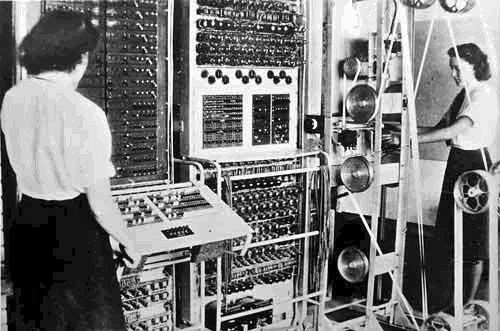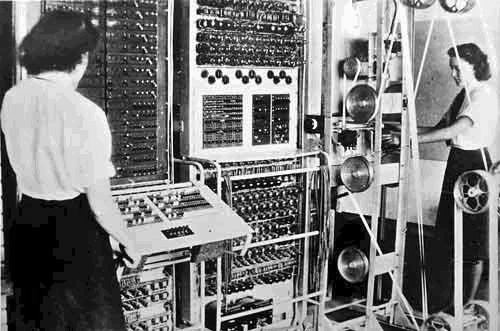- Posted Oct. 23, 2013, 1:30 p.m. - 11 years, 9 months ago
Allen Coombs – Project Leader Colossus Mark 2
Allen William Mark Coombs was born on 23rd October 1911, in Bristol. Coombs obtained both a BSc and PhD following his studies at Glasgow University and Strathclyde, and progressed to work at the Post Office Research Station as an Electronics Engineer, based at Dollis Hill in London.
It was while at Dollis Hill that Coombs began to work with Tommy Flowers (principal designer of Colossus), and a team of highly skilled engineers including William Chandler, Sidney Broadhurst, and Harry Fensom. The team’s ground breaking design and technology would result in Colossus, the first programmable electronic computer, which would prove vital in the code breaking of encrypted messages from the German enemy during wartime.
The first Colossus machine took 11 months to complete, and initially operated from Dollis Hill in 1943, moving to Bletchley Park in January of the following year. Following the success of this machine, the Mark 2 Colossus was commissioned and in use from June 1944, with Coombs leading the project. With the latest machine delivering five times the speed of the original Colossus and increased reliability, it facilitated the cryptanalysis of the Lorenz cipher, which enabled the decryption of key instructions from the German High Command to its troops throughout Europe, including battle plans which would crucially effect the Allied strategies for the Normandy landings.
10 Colossus machines were built and in use prior to the end of the war, and such was the significance of the insight into enemy activities and information gained through the use of the Colossus machines, that the code breaking efforts conducted at Bletchley Park are believed to have shortened the war by at least 1-2 years, savings many lives in the process. With the highest level of secrecy surrounding the Colossus projects, it is believed by many that those involved in the design and production of these machines never received the true recognition due for the pioneering expertise which the Colossus represented. Although the machines and blueprints would all be destroyed, in 1992 Tony Sale, an expert in electronic engineering and a computing historian, would lead a team at the Nation Museum of Computing in Bletchley Park with the purpose to build a replica Colossus. This massive task took until 2007 to complete, when again the Colossus demonstrated its incredible decryption capability.
Following the end of the war, Coombs would work on projects such as the Pilot Ace machine, working with Alan Turing on this multipurpose computing machine. Other projects included Coombs’ pioneering work on packet switching of analogue signals, as well as the development of an optical character recognition system which would be used by the postal service, with this work utilised in designs for machines which facilitated the reading of postcodes.
Following Coombs’ retirement in 1973, he would continue to share his vast knowledge and experience through teaching. Coombs sadly passed away in 1995 at the age of 83, having made a vast and invaluable contribution in computing history.
Image Credits: http://bit.ly/1c3w3a8
Latest Articles
-
Our latest testimonial for Infix 6
Dec. 19, 2016, 2:40 p.m. -
Most commonly translated Turkish words
Feb. 6, 2015, 9 a.m. -
Merry Christmas & A Happy New Year
Dec. 25, 2016, 8 a.m. -
New Save PDF to SVG feature introduced to Spire.Office
Dec. 23, 2016, 11:54 a.m. -
Editing educational PDFs – a user perspective
July 21, 2014, 8:03 a.m.



